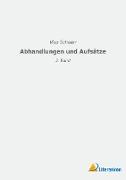Conflict Policy and Advertising Agency-Client Relations
BücherAngebote / Angebote:
Despite its history as a contentious issue in agency-client relations, conflicts of interest remain a relatively undeveloped topic in both the professional and academic literature on advertising and marketing. As a step toward the development of a deeper understanding of the state of contemporary practices relating to conflict norms, Conflict Policy and Advertising Agency-Client Relations surveys and integrates three somewhat disparate bodies of relevant material that are available. First, an examination of the history of the advertising industry in the U.S. and Japan serves to inform our understanding of the development and functioning of the principal contending policy options: the exclusivity norm and the "split account system, " respectively. Second, analysis of press accounts of specific conflicts and policy guidelines issued by trade associations illustrates how the re-structuring of the U.S. advertising industry over the past three decades has affected potential threats of conflicts and means for addressing them. Third, a handful of theoretical and empirical studies are available that offer valuable insights into the issues and controversies surrounding conflicts that have been raised in the trade literature. After the introduction, Section 2 outlines a conceptual framework for analyzing the antecedents and consequences of conflicts of interest encountered by professional service firms and discusses the role of safeguards in addressing threats of security breaches. Section 3 traces the evolution of the exclusivity norm in the U.S. and the split account system in Japan. Section 4 examines the use of safeguard and contractual provisions in limiting agency-client conflicts. Section 5 presents a typology of conflicts and policy guidelines issued by trade associations, followed by an analysis of a hybrid family of conflict policies that has emerged to accommodate the interests of holding companies and their large diversified, global corporate clients. The resolution of conflict disputes is also discussed. Section 6 reviews the limited body of analytical and empirical research available on the economics of conflict policies. Section 7 considers directions and opportunities for further research. Section 8 provides an overview of the current state of knowledge about alternative conflict policies followed in practice, the economic rationale underlying their use, and the effects conflict policy has on the industry's efficiency and organization.
Folgt in ca. 15 Arbeitstagen




